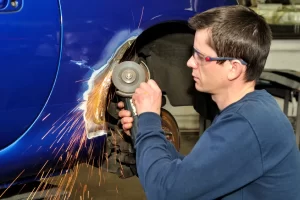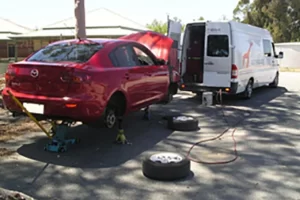Electric Vehicle Battery Maintenance and Replacement: The Unspoken Truths
Here’s the deal: understanding your EV’s battery isn’t just for gearheads. It’s the key to protecting your car’s value, its range, and your peace of mind for years to come. Let’s dive in.
It’s Not a Phone Battery: The Basics of EV Battery Care
Think of your EV battery like a professional athlete. It performs best within a specific comfort zone. Push it to its absolute limits every single day, and it’ll wear out faster. Baby it too much, and, well, you’re not getting your money’s worth. The goal is a happy medium.
The Charging Sweet Spot (It’s Not 0-100%)
This is probably the most talked-about topic, and for good reason. Lithium-ion batteries, the kind in virtually all modern EVs, dislike extremes.
For daily use, you don’t need to fill it to the brim. In fact, most manufacturers recommend setting your charge limit to 80-90%. It’s like not stuffing yourself at every meal—it’s just healthier long-term. Similarly, you generally shouldn’t let it dip below 20% regularly. That deep discharge causes stress.
And what about those DC fast chargers? They’re the espresso shot of the EV world—incredibly useful on a road trip, but you wouldn’t want to live on them. The high heat and power from rapid charging can accelerate battery degradation over time. So, use them when you need to, but for your daily top-up, slow and steady AC charging wins the race.
Temperature is the Silent Killer
Extreme heat and bitter cold are your battery’s nemeses. Park in the shade on a scorching day if you can. In freezing winters, if you have a garage, use it. The car’s thermal management system works hard to protect the battery, but giving it a helping hand by avoiding environmental extremes makes a real difference.
When Things Start to Fade: Recognizing Battery Degradation
All batteries lose capacity over time. It’s a simple fact of chemistry. The question is, how much is normal?
You might notice it subtly at first. That commute that used to use 40% of your battery now uses 45%. The guess-o-meter (that’s the range estimator) is a bit less optimistic than it used to be. This is normal. Most EVs see the steepest drop in the first couple of years—maybe 5-10%—and then the degradation curve flattens out significantly.
Manufacturers know this is a huge concern, which is why they back their batteries with lengthy warranties. Most cover a certain period and a guaranteed level of capacity retention, often 70% over 8 years or 100,000 miles.
If your range has plummeted to, say, 50% of its original value within the warranty period, you likely have a strong case for a replacement.
The Big One: Navigating EV Battery Replacement
This is the scary part, the headline-grabber. “EV battery replacement costs more than the car is worth!” You’ve seen the stories. The reality is… more nuanced.
Cost Realities: It’s Not Always a Full Swap
First, a complete battery failure is rare. More common is a failure of a specific module within the pack. Think of the battery not as a single unit, but as a series of smaller batteries wired together. A skilled technician can often replace just the faulty module, a process that costs a few thousand dollars instead of the astronomical $15,000-$20,000+ for a full pack.
Here’s a rough, and we mean rough, breakdown of potential costs:
| Service Type | Estimated Cost Range | When It’s Needed |
| Individual Module Replacement | $2,000 – $5,000 | When one or a few modules fail, causing errors or power loss. |
| Full Battery Pack Replacement | $10,000 – $25,000+ | Catastrophic failure, severe degradation, or major damage. |
| Battery Refurbishment | $3,000 – $9,000 | A growing industry that replaces bad modules with refurbished ones. |
See? It’s not a single, terrifying number. The aftermarket and refurbishment scene is also growing rapidly, which will inevitably drive costs down.
The Warranty Safety Net
This is your first and best line of defense. If your battery’s capacity drops below the warranty threshold (again, often 70%) within the warranty period, the manufacturer should replace or repair it at no cost to you. It completely de-risks the biggest fear for the first 8 years or so of ownership.
Beyond the Car’s Life: The Second-Life Question
Here’s a thought that doesn’t get enough airtime. What happens to an EV battery when it’s no longer fit for the road? It still holds a significant amount of capacity—perfect for less demanding jobs.
These “second-life” batteries are being used for things like:
- Grid energy storage, helping to stabilize power supplies.
- Backup power for homes and businesses.
- Powering industrial machinery.
This isn’t just a pie-in-the-sky idea; it’s a developing industry that adds value to the battery long after it leaves your car, making the overall lifecycle much more sustainable and, potentially, more valuable.
A Long-Term Relationship
So, maintaining and eventually replacing an EV battery isn’t the monster under the bed it’s made out to be. It’s a manageable process. Treat the battery with a little respect—avoid the charging extremes, be mindful of temperature—and it will reward you with a long and healthy life.
The technology, the warranties, and the aftermarket solutions are all evolving at a breathtaking pace. The real shift in thinking is this: you’re not just maintaining a car. You’re stewarding a sophisticated, repurposeable energy asset. And that, honestly, is a pretty powerful place to be.
Let’s be honest. When you first get an electric vehicle, the battery feels like a magical black box. You plug it in, it gives you miles, and you forget about it. It’s not like the clattering, oil-dripping heart of an old combustion engine, right?
Well, yes and no. While EV batteries are famously low-maintenance, they aren’t no-maintenance. And the big question—the one that nags at every potential EV owner—is what happens when that expensive-looking pack under the floor finally gives up the ghost.
Here’s the deal: understanding your EV’s battery isn’t just for gearheads. It’s the key to protecting your car’s value, its range, and your peace of mind for years to come. Let’s dive in.
It’s Not a Phone Battery: The Basics of EV Battery Care
Think of your EV battery like a professional athlete. It performs best within a specific comfort zone. Push it to its absolute limits every single day, and it’ll wear out faster. Baby it too much, and, well, you’re not getting your money’s worth. The goal is a happy medium.
The Charging Sweet Spot (It’s Not 0-100%)
This is probably the most talked-about topic, and for good reason. Lithium-ion batteries, the kind in virtually all modern EVs, dislike extremes.
For daily use, you don’t need to fill it to the brim. In fact, most manufacturers recommend setting your charge limit to 80-90%. It’s like not stuffing yourself at every meal—it’s just healthier long-term. Similarly, you generally shouldn’t let it dip below 20% regularly. That deep discharge causes stress.
And what about those DC fast chargers? They’re the espresso shot of the EV world—incredibly useful on a road trip, but you wouldn’t want to live on them. The high heat and power from rapid charging can accelerate battery degradation over time. So, use them when you need to, but for your daily top-up, slow and steady AC charging wins the race.
Temperature is the Silent Killer
Extreme heat and bitter cold are your battery’s nemeses. Park in the shade on a scorching day if you can. In freezing winters, if you have a garage, use it. The car’s thermal management system works hard to protect the battery, but giving it a helping hand by avoiding environmental extremes makes a real difference.
When Things Start to Fade: Recognizing Battery Degradation
All batteries lose capacity over time. It’s a simple fact of chemistry. The question is, how much is normal?
You might notice it subtly at first. That commute that used to use 40% of your battery now uses 45%. The guess-o-meter (that’s the range estimator) is a bit less optimistic than it used to be. This is normal. Most EVs see the steepest drop in the first couple of years—maybe 5-10%—and then the degradation curve flattens out significantly.
Manufacturers know this is a huge concern, which is why they back their batteries with lengthy warranties. Most cover a certain period and a guaranteed level of capacity retention, often 70% over 8 years or 100,000 miles.
If your range has plummeted to, say, 50% of its original value within the warranty period, you likely have a strong case for a replacement.
The Big One: Navigating EV Battery Replacement
This is the scary part, the headline-grabber. “EV battery replacement costs more than the car is worth!” You’ve seen the stories. The reality is… more nuanced.
Cost Realities: It’s Not Always a Full Swap
First, a complete battery failure is rare. More common is a failure of a specific module within the pack. Think of the battery not as a single unit, but as a series of smaller batteries wired together. A skilled technician can often replace just the faulty module, a process that costs a few thousand dollars instead of the astronomical $15,000-$20,000+ for a full pack.
Here’s a rough, and we mean rough, breakdown of potential costs:
| Service Type | Estimated Cost Range | When It’s Needed |
| Individual Module Replacement | $2,000 – $5,000 | When one or a few modules fail, causing errors or power loss. |
| Full Battery Pack Replacement | $10,000 – $25,000+ | Catastrophic failure, severe degradation, or major damage. |
| Battery Refurbishment | $3,000 – $9,000 | A growing industry that replaces bad modules with refurbished ones. |
See? It’s not a single, terrifying number. The aftermarket and refurbishment scene is also growing rapidly, which will inevitably drive costs down.
The Warranty Safety Net
This is your first and best line of defense. If your battery’s capacity drops below the warranty threshold (again, often 70%) within the warranty period, the manufacturer should replace or repair it at no cost to you. It completely de-risks the biggest fear for the first 8 years or so of ownership.
Beyond the Car’s Life: The Second-Life Question
Here’s a thought that doesn’t get enough airtime. What happens to an EV battery when it’s no longer fit for the road? It still holds a significant amount of capacity—perfect for less demanding jobs.
These “second-life” batteries are being used for things like:
- Grid energy storage, helping to stabilize power supplies.
- Backup power for homes and businesses.
- Powering industrial machinery.
This isn’t just a pie-in-the-sky idea; it’s a developing industry that adds value to the battery long after it leaves your car, making the overall lifecycle much more sustainable and, potentially, more valuable.
A Long-Term Relationship
So, maintaining and eventually replacing an EV battery isn’t the monster under the bed it’s made out to be. It’s a manageable process. Treat the battery with a little respect—avoid the charging extremes, be mindful of temperature—and it will reward you with a long and healthy life.
The technology, the warranties, and the aftermarket solutions are all evolving at a breathtaking pace. The real shift in thinking is this: you’re not just maintaining a car. You’re stewarding a sophisticated, repurposeable energy asset. And that, honestly, is a pretty powerful place to be.









